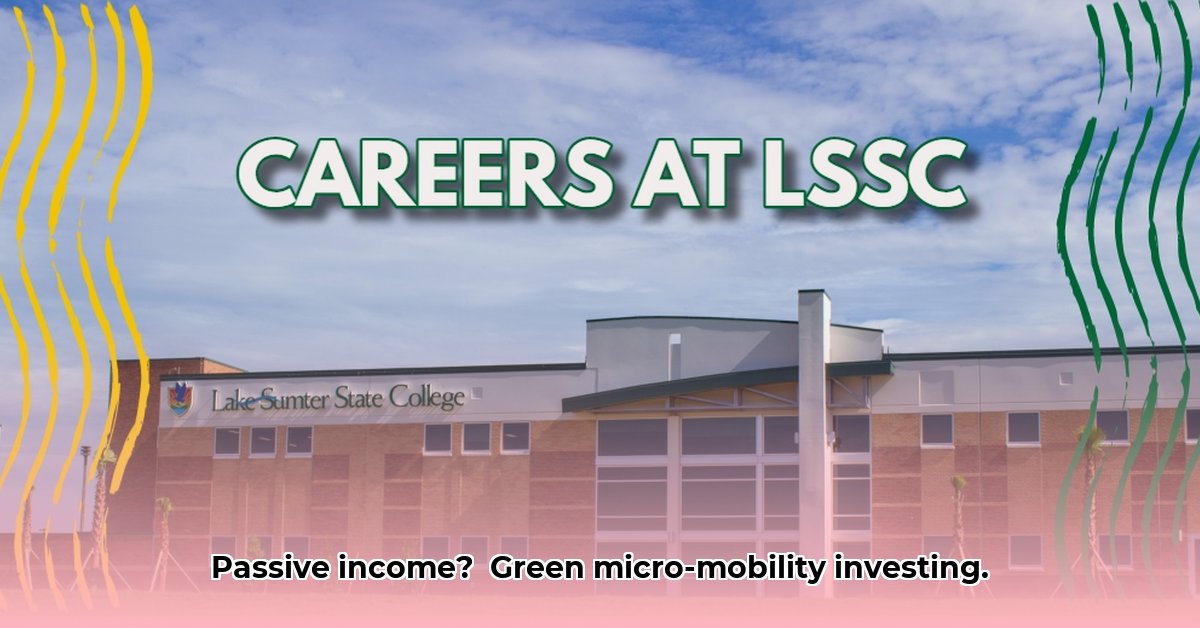
LSSC Company: Green Scooters, Passive Income, and the Fine Print
Investing in sustainable ventures is attractive, and LSSC presents a compelling proposition: passive income from sponsored electric scooters. However, a critical assessment reveals significant uncertainties that potential investors must carefully consider. The company's promise of steady income streams through sponsorships and referral programs is enticing, but lacks the transparency needed to evaluate its true viability. Without access to LSSC's financial records, it's impossible to verify their claims of consistent profitability—a major red flag for any discerning investor. This lack of transparency raises concerns about the actual return on investment, highlighting the inherent gamble associated with this venture.
What if scooter usage is lower than projected? What if regulatory changes impact operations? What's the competitive landscape? These are critical questions with potentially severe implications. The allure of easy money must be tempered by a realistic assessment of the considerable risks involved.
Is It Really Green? Environmental Claims Under Scrutiny
LSSC promotes a vision of reduced car usage, cleaner air, and a greener planet. But these claims demand rigorous scrutiny. Independent verification of their environmental impact is crucial. What data exists on the energy consumption of scooter manufacturing? What's the plan for end-of-life scooter management? A detailed life-cycle assessment is needed to validate their environmental claims and prevent the possibility of "greenwashing"—marketing that overstates environmental benefits.
Imagine: You invest, expecting to contribute to a sustainable future. But what if LSSC's environmental claims prove to be exaggerated? This could significantly impact the investment's ethical appeal and long-term value.
The Risks: A Realistic Look at the Potential Downsides
Investing in LSSC carries several notable risks, each with the potential to significantly impact returns:
| Risk Factor | Likelihood | Potential Impact | Mitigation Strategies |
|---|---|---|---|
| Low Scooter Usage | Moderate to High | Severe | Demand robust usage data from LSSC; compare with similar ventures. |
| Unexpected Regulatory Changes | Moderate | Severe | Conduct thorough research on current and future regulations. |
| Technological Advancements | Moderate | Moderate | Assess LSSC's adaptability to technological advancements. |
| Intense Competition | High | Moderate to Severe | Evaluate LSSC's competitive advantages and market positioning. |
| Unforeseen Environmental Concerns | Low | Potentially Severe | Obtain a comprehensive environmental impact assessment. |
Data-backed analysis is crucial before investing. How does LSSC's projected growth compare with industry benchmarks? Have similar ventures faced unforeseen challenges? Understanding these comparative metrics provides a more nuanced perspective on the risks.
What Smart Investors Should Do Before Jumping In
Before investing, thorough due diligence is paramount. This isn't optional; it's a necessity given the limited information currently available from LSSC. A structured approach is key:
- Independent Financial Audit: Secure an independent assessment of LSSC's financial projections and operational models.
- Regulatory Compliance Review: Assess current and anticipated regulations in the target markets. Are there potential compliance costs or limitations?
- Environmental Impact Assessment: Demand a detailed life-cycle assessment, providing a transparent view of the environmental footprint.
- Competitive Analysis: Compare LSSC to competitors. Does it have a sustainable competitive advantage? What are its strengths and weaknesses?
- Portfolio Diversification: Never concentrate investments heavily in a single venture. Diversification is key to minimizing risk.
"Thorough due diligence is not just prudent; it's essential for mitigating the significant risks involved in early-stage investments like LSSC," states Dr. Anya Sharma, Professor of Finance at the University of California, Berkeley.
How to Assess the Financial Viability of Sustainable Micro-Mobility Investments
Sustainable micro-mobility presents significant investment opportunities, but requires careful assessment. A cautious, data-driven approach is crucial. The potential for substantial returns must be balanced against the inherent uncertainties. Think of it as planting a tree: long-term rewards exist, but cultivating success demands planning, care, and patience.
Due Diligence: Your First Step
Due diligence involves:
- Market Analysis: Evaluate market demand, competitive landscape, and scalability.
- Regulatory Compliance: Analyze operational requirements and potential compliance issues.
- Operational Efficiency: Assess cost structures; can they maintain profitability while scaling?
Understanding the Financial Model
Examine revenue streams, cost structures, and scalability: Are revenue streams stable? Are costs manageable and scalable? These factors will dictate long-term profitability.
Long-Term Projections and Uncertainties
Account for technological advancements, shifting consumer preferences, and economic uncertainty when formulating long-term projections. Accurate predictive modeling in this rapidly evolving sector is challenging.
The Role of Impact Investment
Many investors prioritize environmental and social impact alongside financial returns. Measuring and reporting impact effectively will attract socially responsible investors, a significant factor in securing long-term funding. Transparent governance is crucial.
The Bottom Line: Proceed with Extreme Caution
LSSC presents a potentially rewarding investment, yet the lack of transparency and inherent risks require extreme caution. Don’t let enthusiasm override thorough due diligence. Demand transparency, conduct in-depth research, and carefully consider your personal risk tolerance. Only then can you make an informed decision. Until LSSC provides comprehensive information, many investors will likely view the risks as outweighing the potential benefits.